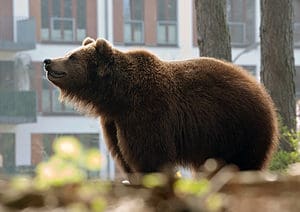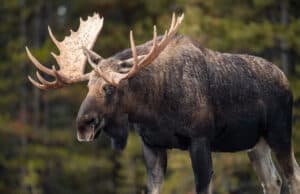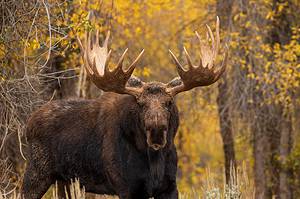Moose are the largest existing species of the deer family in the world today and the tallest mammal in North America. With their huge antlers that can be more than 6 feet long, on top of an already large body, moose certainly cut an impressive sight.
But just how big is the largest moose in the world? We’ll discover just how big the largest moose ever recorded was and see if ancient moose were even bigger!
The Largest And Smallest Moose Subspecies
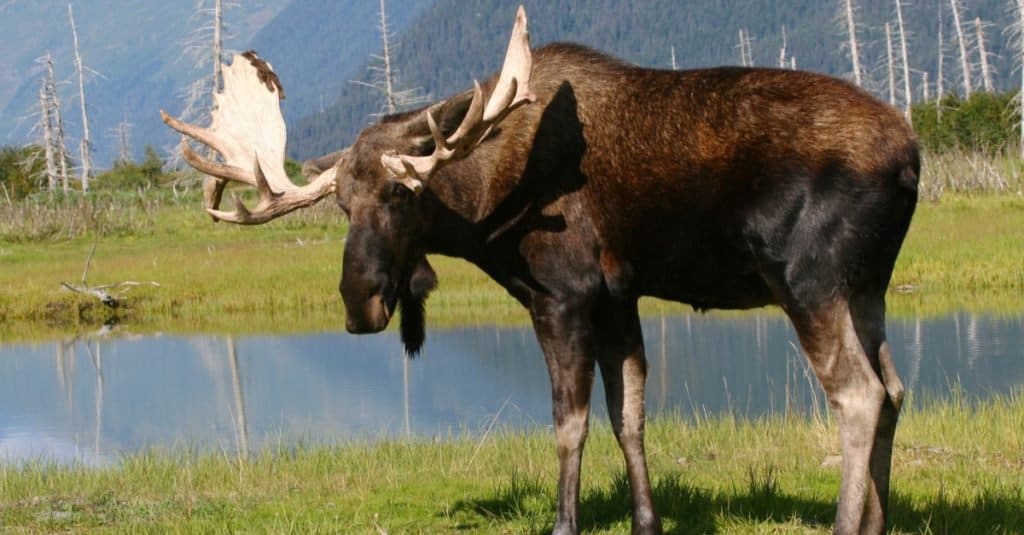
Moose are the tallest mammal in North America
©Steve Bower/Shutterstock.com
Found widely across North America, there are four recognized subspecies of moose on the continent – Eastern, Western, Alaskan, and Shiras. The Shiras moose is the smallest subspecies, while the Alaskan is the largest and is found in Alaska and western Yukon.
The main differences between the subspecies are location and size. The Shiras moose are found in British Colombia, Canada, Wyoming, Montana, Colorado, and Idaho. The eastern moose is found across eastern Canada, New England, and New York, while the western moose is located in western Canada and the western areas of the US.
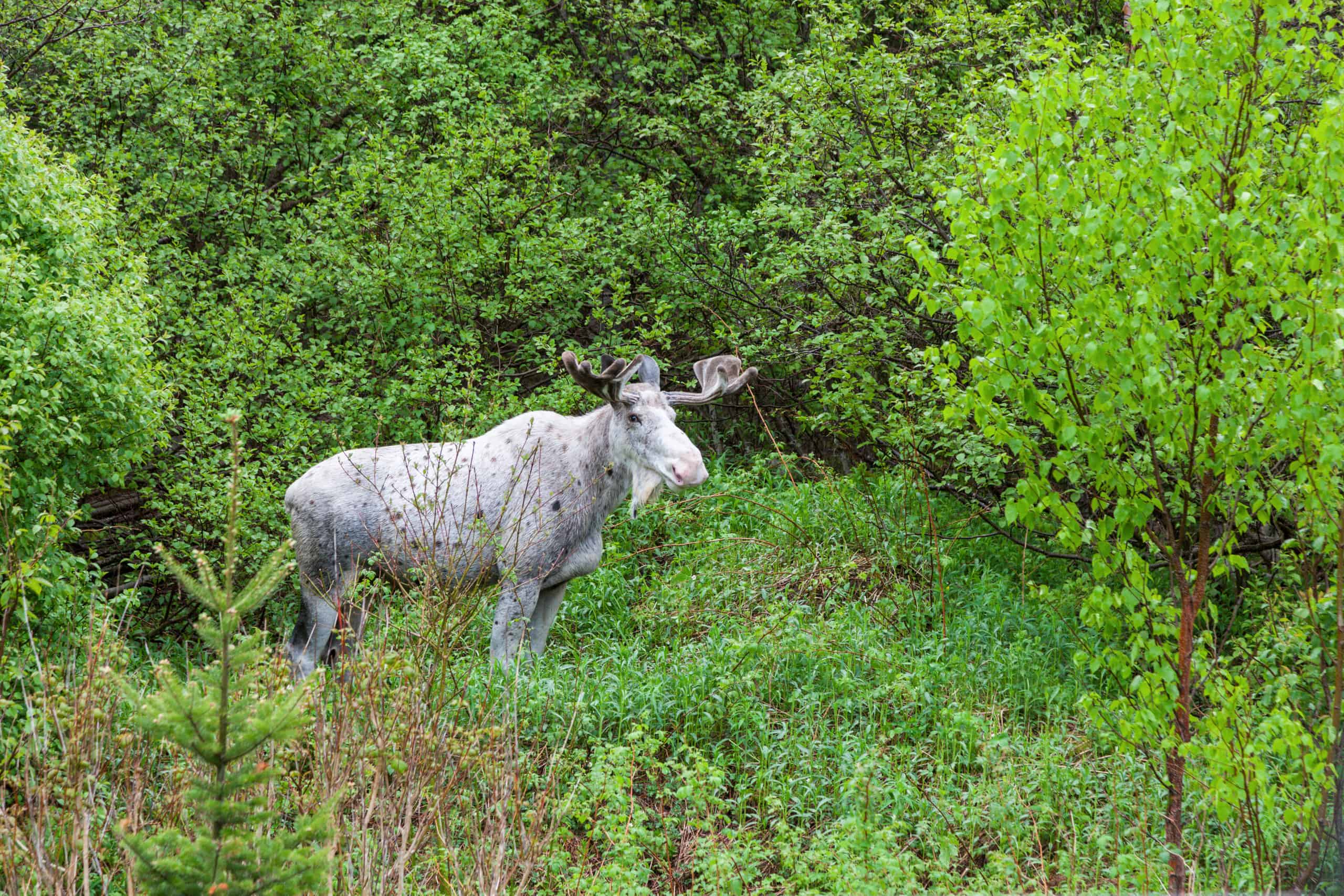
White moose are extremely rare, with only about 500 remaining.
©Henryk Sadura/Shutterstock.com
Moose have an average shoulder height of 5 to 6.5 feet and an average weight of 800 to 1,200 pounds, but some have been known to be much larger. Considering that moose are only measured to their shoulder height and their head and antlers are above this, they are easily the tallest mammal to roam North America.
Compared with other deer, moose stand far taller. Mule deer only have a shoulder height of around 3 feet and reindeer have a shoulder height of no more than 4 feet 7 inches.
Moose are dark brown and have long, broad faces and large muzzles. Their nose and upper lip are particularly large and are often used for stripping leaves off branches. They have a short tail and a dewlap, which is a large flap of skin hanging underneath their chin.
Moose have two layers of fur to help them stay warm in sub-zero temperatures. The bottom layer is soft and woolly, while the top layer is made up of long guard hairs. These hairs are hollow and are filled with air which is useful for both insulation and for keeping them afloat when they are swimming.
The Largest Moose Antlers On Record
Male moose have broad, open-shaped antlers which can be more than 6 feet long. The size and growth rate of their antlers are determined by their age and diet and symmetrical antlers mean the moose is in good health. The diameter of the antler beam is used to determine the age of the moose, rather than the number of tines. The symmetry of antlers usually declines after the moose turns 13 years old.
Antlers are shed every winter so that the moose can conserve energy and a new set grows each spring. Antlers take between 3 and 5 months to develop fully. This makes them one of the fastest-growing animal organs in the world. New antlers are covered in velvet and by September it has been rubbed off by the moose rubbing and thrashing with his antlers.
Antlers that have been shed are eaten by birds, rodents, and other carnivores as they are an excellent source of nutrition for them.
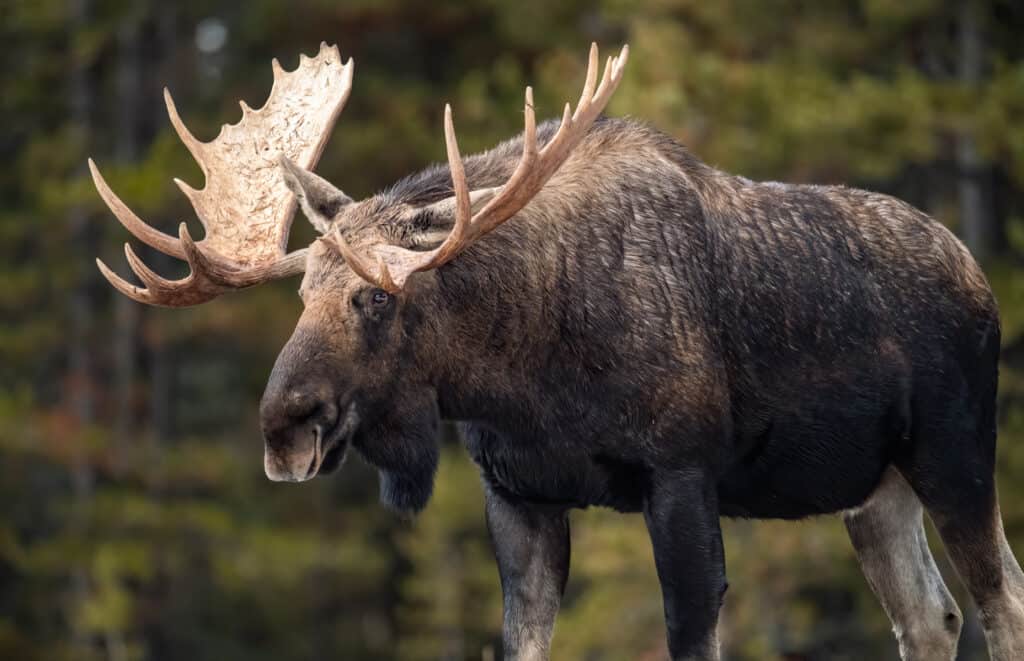
Bull moose have long antlers.
©Harry Collins Photography/Shutterstock.com
Moose use their antlers to spar and fight with each other when competing for females. However, the female chooses her mate based on their antler size. Females prefer males with bigger antlers as they show he is in good health, but it can also be hereditary. Therefore, by mating with a male who has large antlers her young should be the same. Males usually fast for around two weeks during the peak of the rutting season because they are so busy with the females.
The largest moose antlers on record measured 6’3&5/8″ (six feet and three and five-eights inches) across. They were scored by the Boone and Crocket Club at 263-5/8. However, scores for moose antlers include various measurements of size and not just their width. In 1998 a hunter recorded a moose whose antlers measured 82″ (6 feet and ten inches) wide, which would qualify as the widest moose antlers ever.
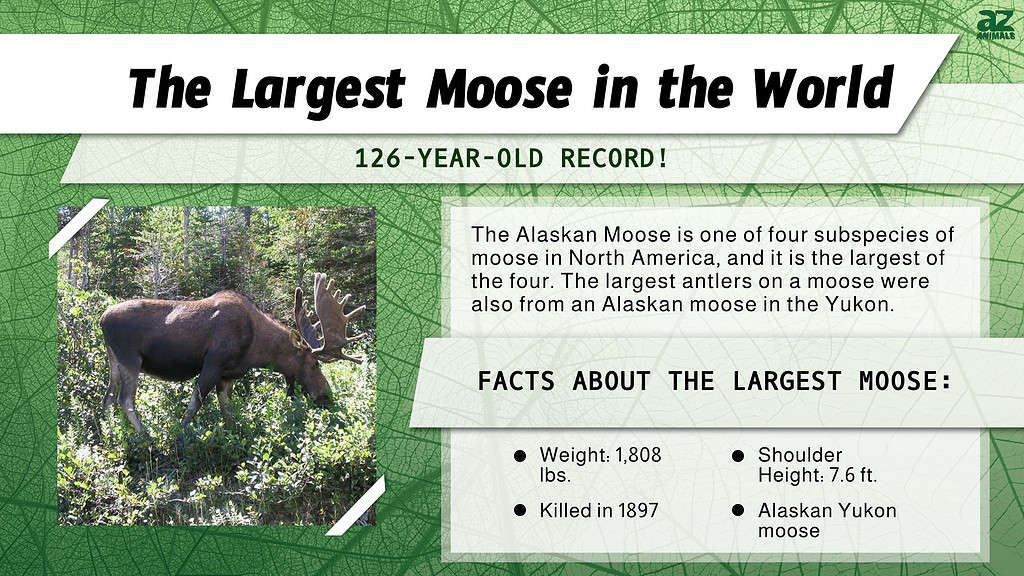
The largest moose ever recorded in the world was an Alaskan moose that weighed 1,808 pounds. The giant was killed in Yukon in September 1897 and had a shoulder height of 7.6 feet, easily making it a record breaker, according to the Guinness Book of World Records. In fact, it was so big that even though more than one hundred years have passed since there has still not been any moose recorded to have beaten its impressive size.
The largest moose — in both weight and antler size — are from the Alaska subspecies.
How Big Were Ancient Moose? (Hint: VERY Big!)

Ancient moose were much, much bigger than moose are today. The earliest known species of moose was Libralces gallicus, which lived 2 million years ago in warm savannas. Libralces gallicus is estimated to have been around twice the weight of an Alaskan moose. It had a longer and narrower muzzle which was more deer-like than moose, but the rest of the head and body shape were very similar to the modern moose. Their most impressive feature was their antlers which spread out horizontally and could be up to 8 feet long. Scientists believe, based on their skull and neck, that they fought using high-speed impact rather than clashing horns.

The largest known deer was similar in weight to the male American bison.
©iStock.com/Jillian Cooper
The largest known species of deer to ever exist was Cervalces latifrons which lived 1.2 to 0.5 million years ago. This massive species was very similar to the modern moose we see today and some were believed to reach 8 feet at the shoulder. The average weight was 2,200 pounds, but the largest was around 2,600 pounds, making Cervalces latifrons a similar weight to a modern male American bison only taller.
The modern moose (alces alces) first appeared during the late Pleistocene (130,000 to 11,700 years ago) and existed alongside the late relatives of Cervalces latifrons.
More Information On Moose
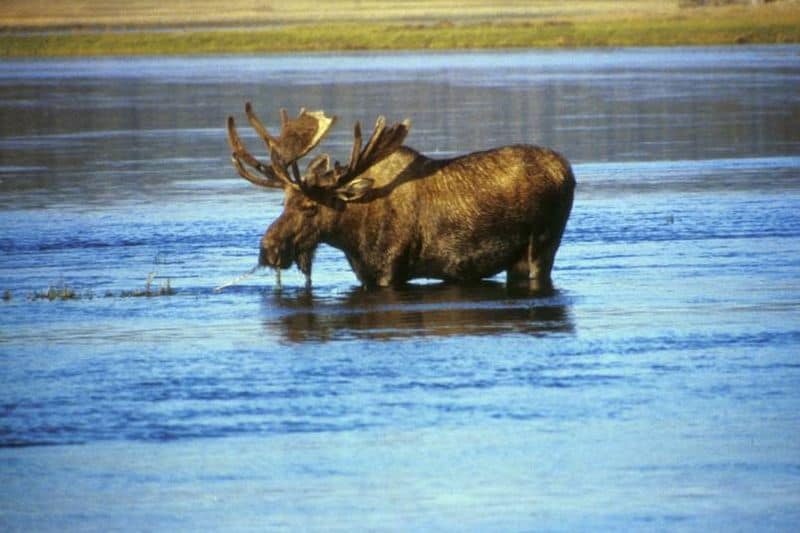
Moose are excellent swimmers
©Mike.lifeguard – Public Domain
Moose are solitary animals and the strongest bonds are between mothers and calves. The gestation period of moose is eight months and females give birth to one calf, or two if food is plentiful. The calf then stays with its mother until just before the next one is born the following year.
Unlike adults which are brown, moose calves are born a reddish color. Except for mothers and calves, moose are usually only seen together during mating season, or when males fight over females.

Newborn calves can swim within a couple of weeks.
©Ghost Bear/Shutterstock.com
Diet
Moose are herbivores and are browsers rather than grazers. They eat a range of fruit and plants but more than half of their diet comes from aquatic plants including lilies and pondweed. Moose are excellent swimmers and are highly unusual as they have the ability to close their nostrils using the pads of fat and muscle that are on their muzzle. This is triggered by water pressure and they can remain underwater for around one minute. Incredibly, moose can even dive as well and have been known to reach depths of around 20 feet to reach plants at the bottom of lakes.
Lifespan
Although they have a lifespan of between 15 and 25 years, moose do have a few predators. Siberian tigers, brown bears, and packs of wolves are their main predators, but black bears and mountain lions also kill calves. One of the most surprising things is that killer whales are also a predator of moose. This is because moose frequently swim between the islands off the northwest coast of America. There have even been a few recorded incidents of Greenland sharks killing moose as well.
Although there has been a decline in moose in recent years the population remains healthy and they are not considered to be under threat.
The photo featured at the top of this post is © Donna Dewhurst / Public Domain / Original
Thank you for reading! Have some feedback for us? Contact the AZ Animals editorial team.




